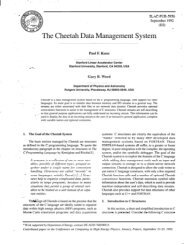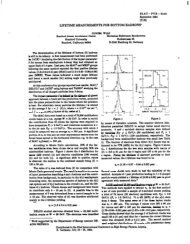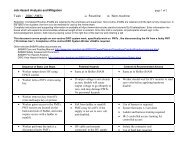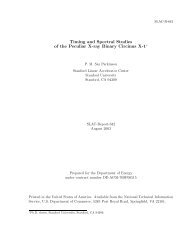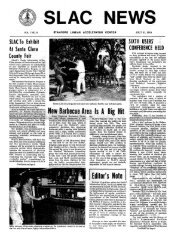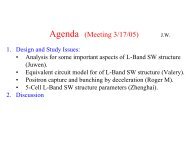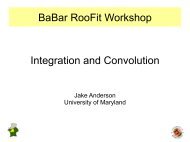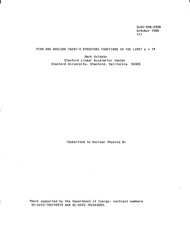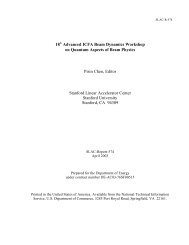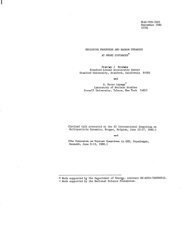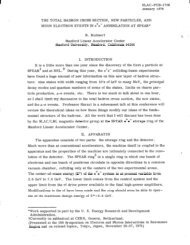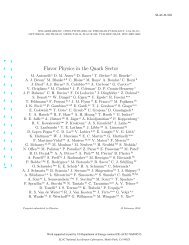A SILICON STRIP VERTEX DETECTOR FOR THE MARK II ...
A SILICON STRIP VERTEX DETECTOR FOR THE MARK II ...
A SILICON STRIP VERTEX DETECTOR FOR THE MARK II ...
You also want an ePaper? Increase the reach of your titles
YUMPU automatically turns print PDFs into web optimized ePapers that Google loves.
i ,c-’ - Fizqd Target Style Detectors: a telescope of three detectors has been tested in<br />
. a beam and gave clean separation between signal and noise, a spatial resolution<br />
better than 5 pm, and a two-track separation better than 150 pm. One of these<br />
silicon detectors was placed at the center of the Mark <strong>II</strong> detector and successfully<br />
took data on cosmic ray events.<br />
The Silicon Detector Module: all the separate parts for a number of proto-<br />
types are in hand and working, including silicon detectors fabricated from 4-inch<br />
diameter wafers. A prototype module is being assembled and will soon be tested<br />
both electrically, and with 60 keV x-rays from an 241Am source (60 keV corre-<br />
sponds to 77% of the signal from a minimum ionizing particle at normal inci-<br />
dence). The effects of radiation damage on the custom-designed read-out chips<br />
are being studied.<br />
Mechanical Support and Alignment: a prototype set of slotted aluminum<br />
end-pieces has been made with electrodischarge machining. Compressed-spring<br />
fixtures for holding the silicon detector modules in the slots are being tested. A<br />
prototype capacitive probe system for monitoring the changes in relative position<br />
of the SSVD and the vertex drift chamber is being assembled.<br />
The Silicon Strip Vertez Detector: there are many challenges ahead but we<br />
expect to have the final SSVD ready for installation in the Mark <strong>II</strong> detector at<br />
the SLC by the spring of 1988.<br />
Acknowledgements<br />
We warmly acknowledge the engineering and design help of Walter Nilsson<br />
(U.C. Santa Cruz), Leonardus Hubbeling (CERN), Michael Studzinski and An-<br />
_e_ negret Wagner (SLAC).<br />
- .- L.<br />
10<br />
;<br />
-


